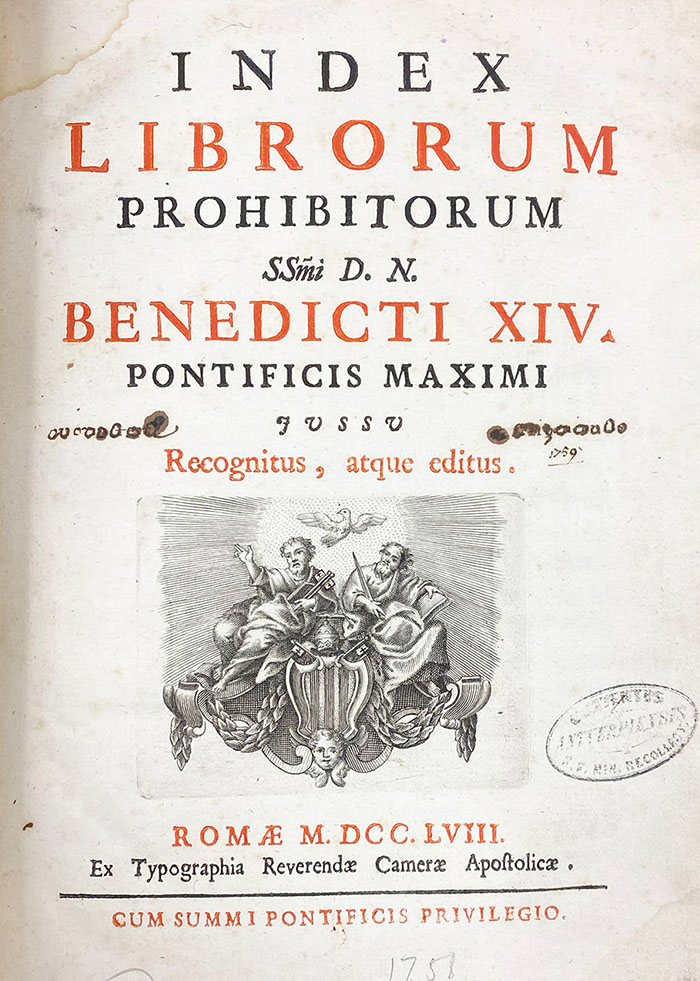Banned Books Week 2020

In honor of Banned Books Week, Special Collections invites you to consider how dominant power structures have the ability to shape history and society by restricting access to information.
Nicolaus Copernicus (1473-1543) was the first astronomer after Aristarchus (ca. 300 BC) to place the sun at the center of the known planetary system and designate earth as simply another planet. This concept would establish the Solar System that we know today. Though he spent decades postulating this major theory, Copernicus didn‘t see his De Revolutionibus Orbium Coelestium published until 1543, the year of his death. In fact, it is said that he held an advance copy in his hands for the first and only time on the same day that he died. Copernicus' heliocentric theory was slow to be accepted, taking two centuries to supplant Ptolemy’s geocentric model due to the widespread influence of theological astronomy.
The importance of this text cannot be overstated. De Revolutionibus largely triggered the Scientific Revolution in Europe, further advanced by the work of Galileo, Kepler and Newton. Curiously, the Catholic Church was also slow to take issue with Copernicus’ work. Certain theologian-astronomers had denounced the heliocentric theory shortly after publication as unproven, and accused Copernicus of developing an idea and using phenomena to support it, rather than basing his deductions on direct observation. A more widespread argument was that the heliocentric theory simply contradicted the prevailing theology of the time, which placed the heavens in rotation around a centered earth. By the time Galileo published his Sidereus Nuncius in 1610, the Inquisition formally declared heliocentrism to be heretical and books supporting the theory, including Copernicus’ De Revolutionibus, were banned. Galileo was tried in 1633, found guilty of heresy, and sentenced to house arrest until his death in 1642.
In 1616, Pope Paul V issued a decree ordering corrections to De Revolutionibus and placed the book on its annual Index Librorum Prohibitorum (Index of Prohibited Books) until those corrections were made on all copies. By 1620, the corrections were made by hand on all existing copies in print, striking out any mention of heliocentrism as fact rather than hypothesis and providing corrected text in shorthand in the margins. An example of these corrections is pictured below. Yet, Copernicus’s De Revolutionibus remained on the Index Librorum Prohibitorum in 1758, along with works by Galileo and Kepler, over 200 years after it was published. It was finally removed later that year, decades after Copernicus’ theory was proven by Galileo, through his observations of Venus and other advancements in physics.
In 1991, Special Collections acquired its copy of Copernicus’s De Revolutionibus (1543) as the Library’s one millionth book. The purchase was made possible through the generosity of the Friends of the Malcolm A. Love Library and numerous donors.
